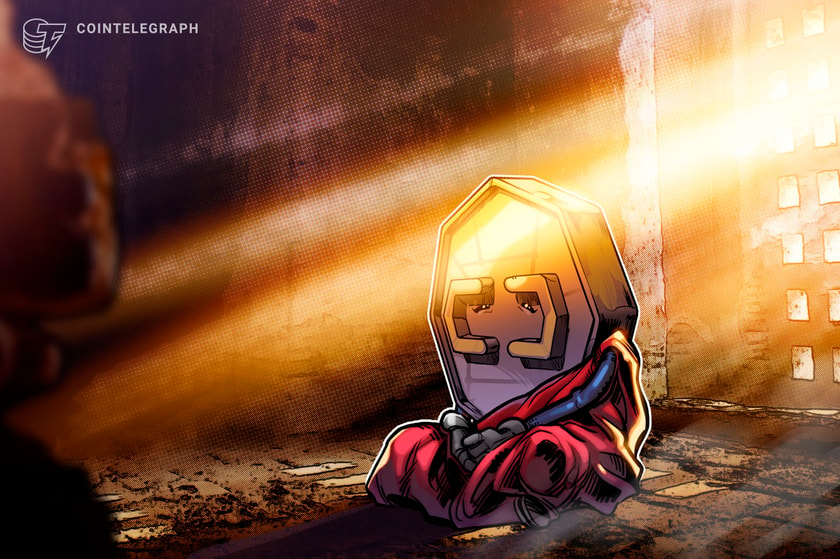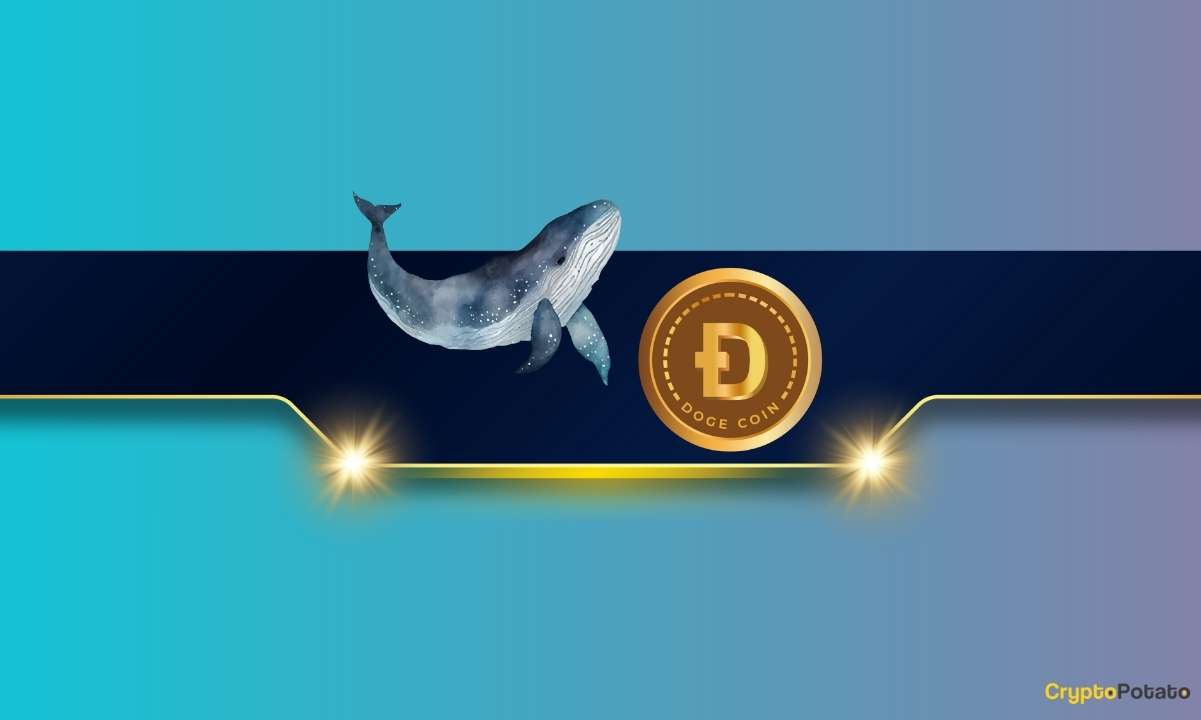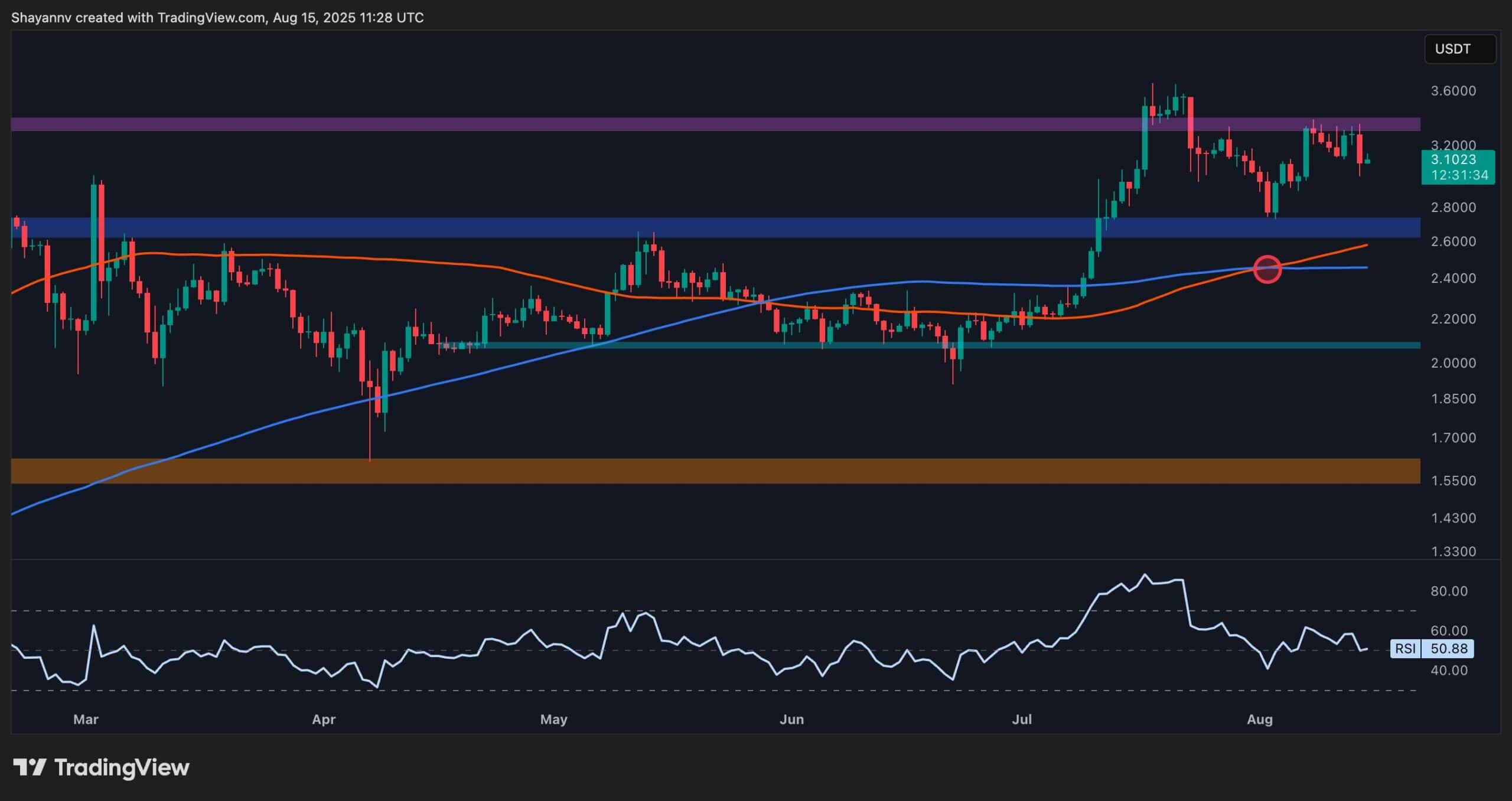Cryptocurrency
Crypto P2P scams in India show digital asset education is needed

Peer-to-peer (P2P) cryptocurrency trading has been a staple of the cryptocurrency community since the industry’s early days.
P2P trading refers to the direct exchange of cryptocurrencies between two users without the involvement of intermediaries. P2P exchanges link buyers and sellers while also adding an extra degree of security through an escrow service. Some of the key advantages of P2P over centralized exchanges include global accessibility, a variety of payment alternatives and no transaction fees.
Furthermore, P2P marketplaces have become crucial for crypto traders and enthusiasts in jurisdictions where governments are hostile to formal cryptocurrency exchanges and service providers.
In India, they became a lifeline for many crypto traders when the country’s central bank issued a banking ban on cryptocurrency businesses in April 2018.
Although the banking ban was eventually lifted by the Supreme Court in March 2020, P2P platforms continue to play a crucial role as banks remain sceptical about offering services to crypto exchanges due to a lack of regulatory clarity.
During the bull market in 2021–2022, India saw a significant surge in crypto trading volumes and crypto platforms, prompting the government to take notice of the nascent ecosystem.
Recent: PayPal’s new PYUSD stablecoin faces legal headwinds and ‘less functionality’
While industry leaders demanded a comprehensive regulatory framework, which has been under development since 2019, the Indian finance minister announced a 30% tax on crypto profits in 2022.
The heavy tax, in addition to the continuing lack of regulatory clarity, has been the bane of the budding Indian crypto ecosystem, deterring Indian investors away from the market.
While mainstream crypto exchanges struggled, P2P platforms saw their volumes skyrocket.

How P2P scams happen
This rise in P2P trading volume also led to significant uptick in P2P scams. These scams often use stolen banking data or lure customers with fake promises of high profits and then use their banking information to scam P2P users.
Earlier in July, two people were arrested in the Indian city of Ujjain in connection with a Binance P2P scandal. The police recovered several fake bank accounts, ATM cards and documents from the accused, who were allegedly buying fake IDs and personal data for 1,500 Indian rupees ($18) in order to scam users of Binance P2P.
Two Accused In Binance P2P Scam Arrested In Ujjain, India
Two accused of scamming people on #Binance P2P arrested by police in Ujjain, India. Many fake bank accounts, ATM cards and documents are seized from accused
The accused used to buy Fake ID Proofs and personal data… pic.twitter.com/Nt5GxhVmio
— Ajay Kashyap (@EverythingAjay) July 11, 2023
One way P2P scammers steal user data is with the help of fake crypto-centered channels on Telegram that promise high profits or airdrops. Many gullible users looking to make a quick profit often join these channels and share their personal banking information. In many other cases, the scammer simply buys or steals the user’s personal information.
The stolen data is then used to create a P2P account on any popular P2P platform — Binance and WazriX are common in India.
The scammer then initiates a buy order on the P2P platform looking for unsuspecting sellers. Once they match with a seller, they send the money to the seller using the victim’s account. Thus, they complete the P2P transaction on the platfrom where the buyer receives the cryptocurrency and the seller receives the money in their bank account.
The buyer (scammer) then vanishes with the crypto and the victim whose bank account was used to send the money only realizes it after the money has been deducted from their bank account.
The victim then lodges a complaint with the police whose first step is to freeze all bank accounts that the victim has interacted with during the scam phase.
This action from the police triggers an extended account freeze for unsuspected sellers of the P2P platform who only realize they were involved in the scam after they get a call from the police or their bank informs them that their account has been frozen.
In one instance, a seller, who wished to remain anonymous, received a “bank account frozen” message while trying to pay for a taxi. After contacting the bank, the seller learned that the halt was requested by the police’s cyber division responsible for looking into online crimes.
When the seller then followed up on the complaint with the police and enquired about the freeze on the account, they were met with threats of legal consequences from the Enforcement Directorate, India’s economic intelligence agency, for a $40 P2P completed transaction on WazirX in October 2022.
The police complaint was filed by a woman who was scammed out of $30,000 between September 2022 and June 2023. The police started the investigation and froze every bank account that interacted with the plaintiff’s accounts during the mentioned time frame, including the sellers for the October transaction.
The seller tried to explain to the police officer that they had successfully completed the P2P transaction and thus have no role in the scam. Despite this, the police ignored their claims, erroneously claiming that crypto transactions are illegal and stating that they must pay the complainee $40 or face further legal action.
With no other options left, the victim eventually paid the $40 amount to the plaintiff’s account after which the police released an order to unfreeze the account.
The police did not respond to Cointelegraph’s request for comment.
The bank account restrictions limit unsuspected victim’s access to cash, and the complexities involved in getting the issue fixed are significant. The seller — who often is also unaware of the scam until the last moment — could be subject to a legal investigation or be required to provide evidence.
Problem using P2P in India still continues. @cz_binance do something. @TheOfficialSBI Got my account frozen. pic.twitter.com/Y6By4l5RGy
— Balamurugan Lakshmanan (@balamurugankl) July 11, 2023
There have been several instances of such P2P scams over the past year where victims noted their fear of authorities, with police often threatening legal actions. The anonymous seller told Cointelegraph that their account was frozen with 50,000 rupees in it, adding that they are very afraid of how to approach authorities and whether they would face legal consequences.
Some advise against P2Ps
Due to a lack of clear guidelines around crypto-related crimes and a lack of understanding of the technology underpinning cryptocurrencies, police investigations often start with freezing the accounts of anyone involved in the situation.
Pushpendra Singh, a prominent crypto personality and educator in the Indian crypto ecosystem, told Cointelegraph that scammers take advantage of the police’s ignorance of how crypto works:
“What these scammers do is they often use platforms, such as international Binance platform, to evade investigation from the Indian authorities, as it becomes quite difficult for the authorities to demand documents from such international platforms. Scammers then take the stolen USDT to Trust Wallet or any other non-KYC’d platform to avoid being tracked. While scammers get away with the money, both buyer and seller in the transaction face financial and legal consequences.”
Singh said that Indian police need to be actively trained on how these scams work. He noted that the “lack of awareness around the nascent tech also leads to victim harassment where many victims are often told by the police that crypto transactions are illegal in India.”
P2P scams have become very common and concerning to the point where the majority of crypto experts in India have now asked traders to avoid P2P trading. Sumit Gupta, CEO of CoinDCX — a major crypto exchange in India — said crypto traders should avoid P2P transations.
Magazine: Should we ban ransomware payments? It’s an attractive but dangerous idea
He said that many people in India got a notice from various government authorities just because they unknowingly sent money from someone who wasn’t the right person to deal with.
Guys, P2P is extremely risky. I’ve been telling folks to avoid using any kind of P2P platforms, it’s an open invitation to trouble.
I know so many people in India got notice from various govt authorities just because they unknowingly sent INR or received INR from someone who… https://t.co/3CoyceiPwP
— Sumit Gupta (CoinDCX) (@smtgpt) April 28, 2023
Other crypto personalities have urged traders to be vigilant and make sure the P2P account one is interacting with has a good history.
What started out as a crypto revolution has turned into a weak spot for the Indian crypto ecosystem.
Collect this article as an NFT to preserve this moment in history and show your support for independent journalism in the crypto space.
Cryptocurrency
Ethereum Foundation, Whales, and Hackers: What’s Driving the ETH Sell-Off?

TL;DR
- Whales, hackers, and the Ethereum Foundation wallets moved over $500M in ETH through large sales and withdrawals.
- Ethereum transfers rose to 4.6M ETH, nearing the monthly high of 5.2M recorded in July.
- Staking inflows hit 247,900 ETH, the highest in a month, locking more supply from trading.
Large Withdrawals and Whale Activity
Ethereum (ETH) has seen heavy movement from major wallets over the past few days. On-chain data from Lookonchain shows a newly created wallet pulled 17,591 ETH, worth $81.62 million, from Kraken in just two hours.
Over three days, two new wallets withdrew a combined 71,025 ETH, valued at $330 million, from the exchange.
One of these wallets, address 0x2A92, has withdrawn 53,434 ETH, worth $242.34 million, in two days. This includes a recent purchase of 30,069 ETH, valued at $138.46 million, during a market drop.
Major ETH Holders Offload Millions Amid Price Rally
In contrast, several separate entities have been disposing of some ETH holdings. A wallet tied to a hacker address 0x17E0 sold 4,958 ETH for $22.13 million at $4,463, securing a profit of $9.75 million. Earlier this year, the same address sold 12,282 ETH at $1,932 and later bought back part of the amount at higher prices.
A different whale sold 20,600 ETH for $96.55 million over the past two days, generating a profit of more than $26 million after holding the position for nine months.
Meanwhile, an Ethereum Foundation-linked wallet, 0xF39d, sold 6,194 ETH worth $28.36 million in the last three days at an average price of $4,578.
Recent sales from the same wallet included an additional 1,100 ETH and 1,695 ETH for over $12.7 million combined.
The #EthereumFoundation-linked wallet(0xF39d) sold another 1,300 $ETH($5.87M) at $4,518 ~11 hours ago.
Over the past 3 days, this wallet has sold a total of 6,194 $ETH($28.36M) at an average price of $4,578.https://t.co/4hfCWymHVG pic.twitter.com/ErUyEY8SJy
— Lookonchain (@lookonchain) August 15, 2025
Network Activity on the Rise
CryptoQuant data shows Ethereum’s total tokens transferred have been climbing since August 9. After ranging between 1 million and 3 million ETH through late July and early August, transfers have risen to 4.6 million ETH, approaching the monthly high of 5.2 million recorded in mid-July. This increase has occurred alongside a price rally from about $3,400 to $4,600.
Interestingly, staking inflows generally stayed between 20,000 and 80,000 ETH per day over the past month. On August 14, inflows jumped to 247,900 ETH, the highest in the period.
At the time, ETH was trading near $4,600. Large staking deposits reduce the amount of ETH available for immediate trading, as staked coins are locked for a set period.
In the meantime, ETH trades at $4,647 with a 24-hour volume of $68.25 billion, down 2% on the day but up 19% over the week.
Binance Free $600 (CryptoPotato Exclusive): Use this link to register a new account and receive $600 exclusive welcome offer on Binance (full details).
LIMITED OFFER for CryptoPotato readers at Bybit: Use this link to register and open a $500 FREE position on any coin!
Cryptocurrency
Massive DOGE Whale Activity Hints at $1 Breakout

TL;DR
- Whales bought two billion DOGE this week, lifting their combined holdings to 27.6 billion coins.
- A single 900M DOGE transfer worth $208M to Binance drew attention to large exchange movements.
- DOGE broke key resistance, with momentum building for a possible push toward the $1 price mark.
Price and Market Moves
Dogecoin (DOGE) traded at $0.23 at press time, slipping 4% over the past day but still showing a 2% gain for the week. Daily turnover came in at about $6.18 billion.
Meanwhile, the broader crypto market saw over $1 billion in liquidations. Hotter-than-expected US Producer Price Index data pushed traders to scale back expectations of a near-term Federal Reserve rate cut. DOGE had roughly 290,500 coins liquidated during the sell-off.
On the two-week chart, analyst Trader Tardigrade notes that DOGE has cleared a downward-sloping resistance line after completing what appears to be a “wave V” in an Elliott Wave sequence. Similar setups in the past, where prolonged declines stayed within falling channels before breaking higher, have been followed by sharp rallies.
$Doge/2-week#Dogecoin is gaining strong momentum to surge above $1 pic.twitter.com/TuSEKr19nv
— Trader Tardigrade (@TATrader_Alan) August 15, 2025
Momentum gauges are also turning up. The Stochastic RSI, which had dropped into oversold territory, is now heading higher. Previous reversals from this zone have coincided with sustained upward moves. The current formation points to a possible run that could carry DOGE past the $1 mark.
Heavy Whale Buying and Large Transfers
As reported by CryptoPotato, blockchain data shows large investors have added two billion DOGE in the past week, spending just under $500 million. That brings their holdings to about 27.6 billion coins, or 18% of the supply. The buying streak has prompted speculation within the community.
Recently, Whale Alert flagged a 900 million DOGE transfer worth about $208 million into Binance. The tracking indicates that it originated from a wallet connected to the exchange, likely as an internal activity. The address involved holds 2.88 billion DOGE, one of the largest balances on the network.
Ali Martinez also reports that transactions above $1 million reached a one-month high, with activity building since early August and peaking as DOGE traded at $0.25.
Whales are back! Dogecoin $DOGE activity at a 1-month high. pic.twitter.com/C83Pv68mCt
— Ali (@ali_charts) August 14, 2025
Sentiment Building
Analyst Gordon described the current setup as “a nice bit of consolidation” before a potential breakout, adding,
“This will be one of the first coins normies FLOCK to & the pump will be MASSIVE.”
With whale accumulation rising, high-value transfers increasing, and a bullish technical pattern in play, DOGE is positioned for a potential push toward $1 if momentum holds.
Binance Free $600 (CryptoPotato Exclusive): Use this link to register a new account and receive $600 exclusive welcome offer on Binance (full details).
LIMITED OFFER for CryptoPotato readers at Bybit: Use this link to register and open a $500 FREE position on any coin!
Cryptocurrency
Ripple Price Analysis: XRP at Risk as Key Support Levels Could Trigger Sharp Drop

XRP has recently entered a consolidation phase after a strong rally earlier this summer, with the price action now hovering around key resistance levels on both its USDT and BTC pairs. Yet, while momentum has slowed, the charts still indicate a generally bullish structure, with multiple key support levels remaining firmly in place.
Technical Analysis
By ShayanMarkets
The USDT Pair
On the XRP/USDT daily chart, the price is currently trading near the $3.10 mark, facing a strong resistance zone around $3.40. This follows a breakout above the $2.70 range in July, which has now flipped into a support area.
Both the 100-day and 200-day moving averages are also trending upward and recently formed a bullish crossover around $2.45, reinforcing the medium-term bullish sentiment. If the $3.40 resistance breaks, a push toward the critical $4.00 range becomes likely.
However, the RSI hovering near the neutral 50 level suggests a lack of strong momentum for now, meaning a short-term pullback into the $2.80 support zone is still possible.
This zone will be key for maintaining the bullish structure. Losing it could open the door for a deeper correction toward the 200-day moving average located around the $2.40 mark. Yet, as long as the price stays above the moving averages, the broader trend remains bullish.
The BTC Pair
Looking at the XRP/BTC chart, the pair has recently pulled back after hitting the 3,000 SAT resistance, with the price currently around 2,600 SAT.
This follows a clean breakout above the long-term descending channel and a successful retest of its upper boundary, which coincided with the 200-day moving average and the 2,400 SAT support zone. This confluence remains a key bullish technical factor, as holding above it could attract renewed buying pressure.
That said, RSI levels around 48 show that momentum has cooled after the sharp July rally, meaning XRP may continue ranging between 2,400 SAT and 3,000 SAT in the near term. A decisive close above 3,000 SAT would likely open the path to the 3,400 SAT zone, while losing 2,400 SAT could shift the bias back toward 2,000 SAT support. For now, the structure still favors the bulls as long as higher lows remain intact.
Binance Free $600 (CryptoPotato Exclusive): Use this link to register a new account and receive $600 exclusive welcome offer on Binance (full details).
LIMITED OFFER for CryptoPotato readers at Bybit: Use this link to register and open a $500 FREE position on any coin!
Disclaimer: Information found on CryptoPotato is those of writers quoted. It does not represent the opinions of CryptoPotato on whether to buy, sell, or hold any investments. You are advised to conduct your own research before making any investment decisions. Use provided information at your own risk. See Disclaimer for more information.
Cryptocurrency charts by TradingView.

 Forex3 years ago
Forex3 years agoForex Today: the dollar is gaining strength amid gloomy sentiment at the start of the Fed’s week

 Forex3 years ago
Forex3 years agoUnbiased review of Pocket Option broker

 Forex3 years ago
Forex3 years agoDollar to pound sterling exchange rate today: Pound plummeted to its lowest since 1985

 Forex3 years ago
Forex3 years agoHow is the Australian dollar doing today?

 Cryptocurrency3 years ago
Cryptocurrency3 years agoWhat happened in the crypto market – current events today

 World3 years ago
World3 years agoWhy are modern video games an art form?

 Commodities3 years ago
Commodities3 years agoCopper continues to fall in price on expectations of lower demand in China

 Economy3 years ago
Economy3 years agoCrude oil tankers double in price due to EU anti-Russian sanctions

























